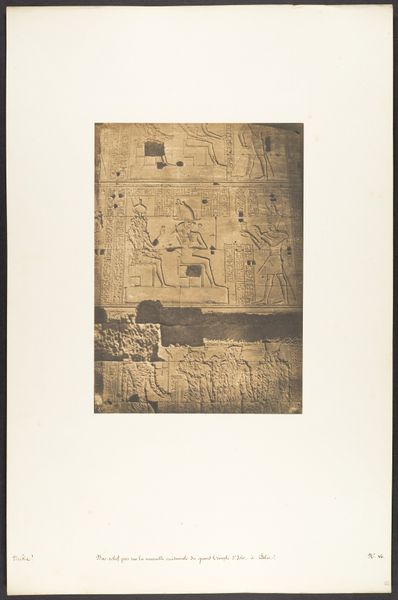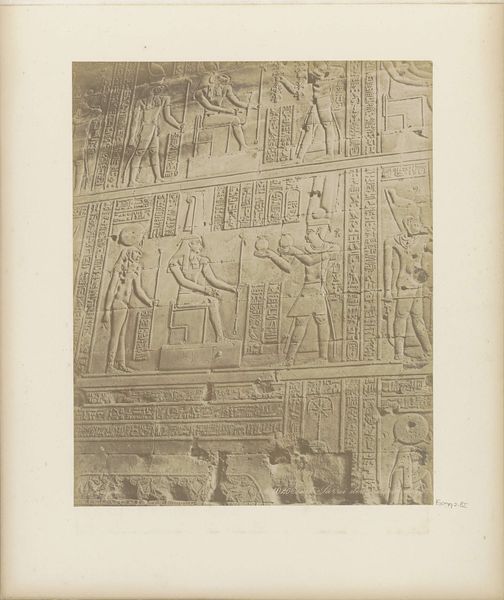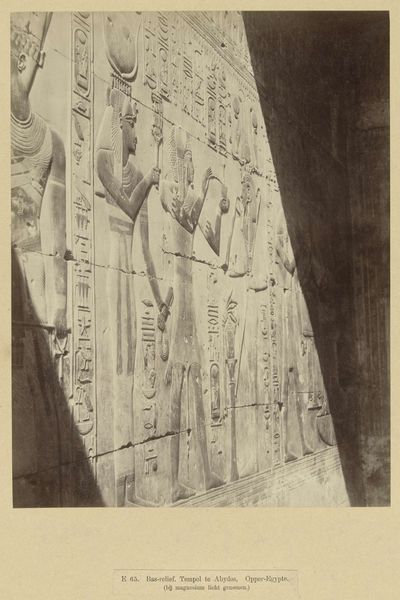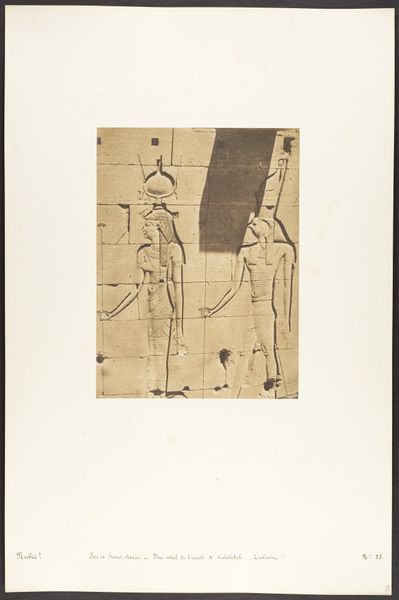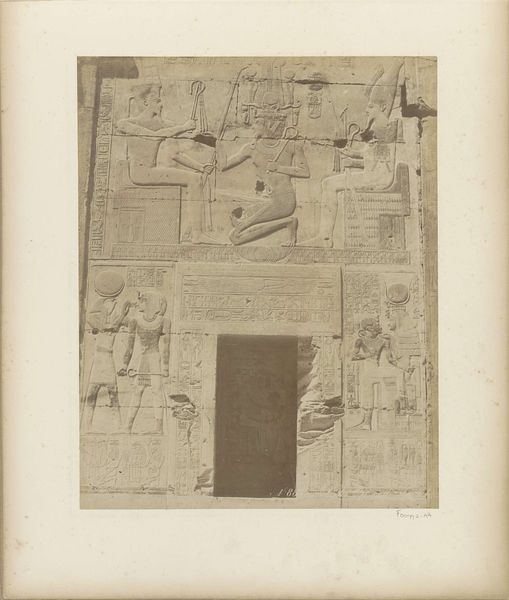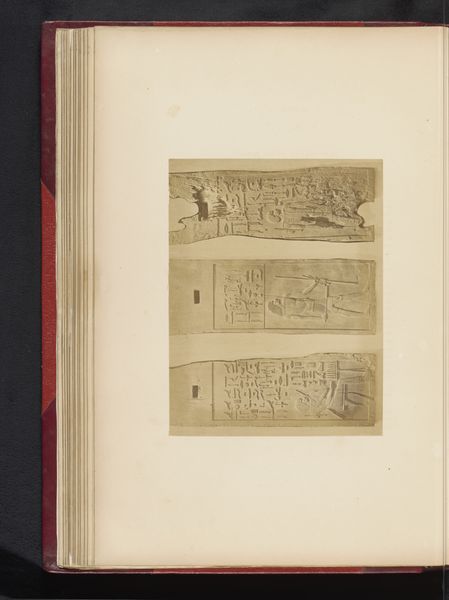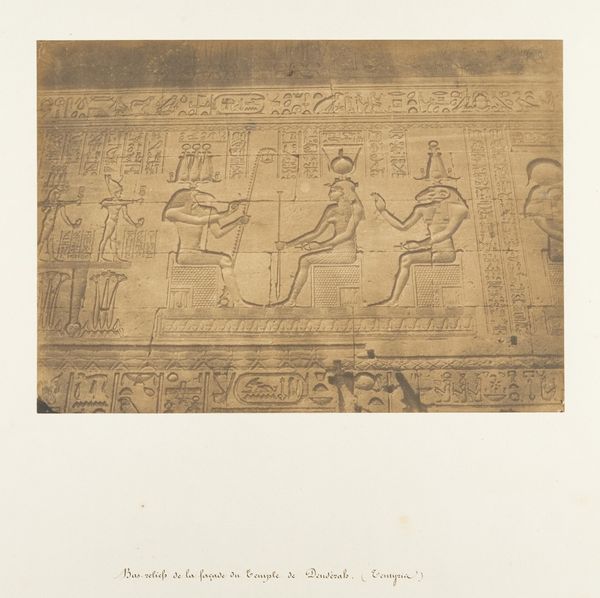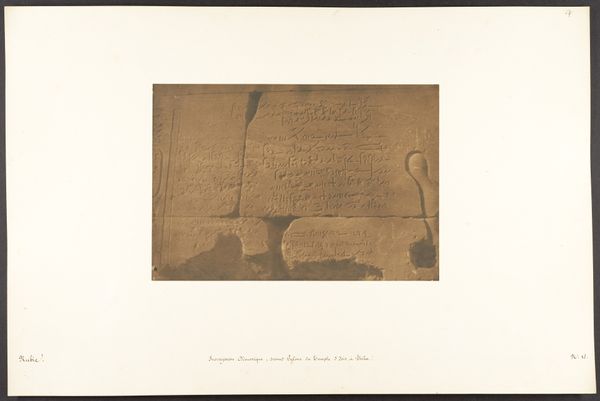
print, daguerreotype, photography, architecture
#
ink drawing
#
ink paper printed
# print
#
landscape
#
daguerreotype
#
ancient-egyptian-art
#
photography
#
linocut print
#
ancient-mediterranean
#
architecture
Dimensions: Image: 9 5/16 × 6 9/16 in. (23.6 × 16.6 cm) Mount: 12 5/16 × 18 11/16 in. (31.2 × 47.5 cm)
Copyright: Public Domain
Editor: Here we have Maxime Du Camp’s "Second Pylone du Temple d'Isis, à Philae," a daguerreotype from 1850, currently housed at the Metropolitan Museum of Art. I am struck by the figures carved in relief - they appear very imposing despite the print's sepia tone. What can you tell us about the figures represented here? Curator: The print presents a doorway’s monumental facade covered in hieroglyphs. These aren’t just decorative; they're a complex symbolic language. Look closely—can you discern any repeating motifs or figures? Editor: Well, I see figures with animal heads and stylized human bodies, almost like a combination of both. They're quite striking. Curator: Exactly. The consistent presentation of these combined human-animal forms serves to root them as divine entities. Their imagery reinforced the societal structure and the power of the pharaohs as intermediaries. Does the medium – the photographic print – itself influence your interpretation? Editor: I think it does. It suggests that, even in the 19th century, there was a strong urge to capture and preserve these cultural artifacts as soon as the technology allowed for that. I'm seeing a continuity between the ancient world and the modern era through this piece. Curator: Precisely. The choice to document this specific pylone also reinforces the significance of Isis. Even now, she retains a prominent presence within our visual lexicon. This cultural memory persists due to our ability to represent such images for prolonged visibility. This photograph facilitates our engagement with symbols that held profound meanings for their originators. What lasting thoughts does it evoke in you? Editor: I find myself more aware of the lasting influence of these ancient belief systems, and how visual imagery helps to keep traditions alive for centuries to come. It is pretty mind-blowing. Curator: Indeed, and seeing the world through Du Camp’s lens also allows us to appreciate our present-day capacity to continue adding new layers of significance.
Comments
No comments
Be the first to comment and join the conversation on the ultimate creative platform.
